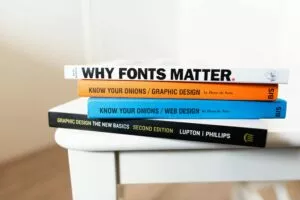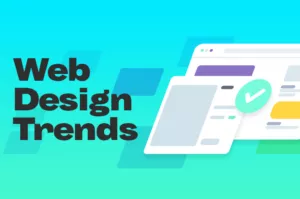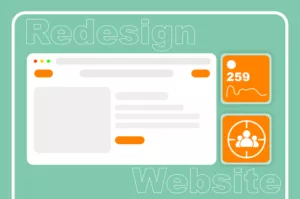These days, a website or application needs to be visually appealing, user-friendly, and entertaining. It can no longer only function. Here’s when graphic design comes into play. Good graphic design can greatly improve usability, accessibility, and general satisfaction, which in turn can improve UX.
Typography, color, imagery, and layout are examples of visual aspects that are included in graphic design. Conversely, user experience (UX) describes how a person feels about a product or service as a whole. Graphic design adds visual elements to enhance the user’s journey, whereas UX concentrates on the user’s journey and interactions. These disciplines work well together to produce an experience that is not only useful but also pleasurable and unforgettable.

Establish a Clear visual hierarchy
Establishing a distinct visual hierarchy is one of the core ideas of graphic design. This entails placing items on a page so that the user’s eye is drawn to the most crucial information first. You may highlight important details and make the information easier to read by adjusting the size, color, contrast, and spacing.
To indicate their importance, headlines, for example, should be bolder and larger than body content. Calls to action (CTAs) and buttons should be placed strategically and in contrasting colors to make them stand out. This makes it easier for consumers to traverse the content and decide where to concentrate their attention.
Use Consistent Branding
Building familiarity and trust through branding requires consistency. A key component of preserving this uniformity across different touchpoints is graphic design. This entails utilizing a consistent color scheme, font, and artwork that complements the identity of the company.
Maintaining consistency facilitates users’ experience with your brand, resulting in more seamless and intuitive interactions. Your website or app should incorporate your brand’s color scheme and logo, for instance, if it has one. This gives customers a consistent and unified experience while also reiterating the company’s identity.
Using Intuitive Navigation to Improve Usability
The way that users engage with navigation elements can be significantly influenced by graphic design. Users will not become frustrated trying to find what they’re seeking if a navigation system is well-designed. This involves creating easily accessible and navigable menus, buttons, and links.
When guiding customers through a process or indicating where to click, think about utilizing visual cues like arrows or icons. Make sure the navigation elements are accessible and responsive on other devices as well. The increasing number of users accessing websites and applications through smartphones and tablets has made mobile-friendly design increasingly important.
Incorporate Visual Feedback
A crucial component of UX design that lets consumers know how their activities are progressing is visual feedback. For example, a button click needs to trigger instantaneous visual feedback, like a color shift or animation. Users can better grasp that their activity has been acknowledged and is being handled thanks to this.
Error messages and success notifications must be visible and distinct from one another. It is easier for consumers to understand what went wrong or right and how to proceed when there are icons, colors, and plain language used.
Prioritize Readability and Accessibility
Ensuring readability and accessibility of your content is crucial to enabling all users, including those with disabilities, to interact with it. This calls for the use of readable fonts, sensible font sizes, and adequate contrast between the backdrop color and the text.
It is also essential to have accessibility features like keyboard navigation, screen reader compatibility, and alternative text for images. By producing clear and informative visual elements that improve the user experience for users with a range of needs, graphic design may support these qualities.
Create Engaging Visual Content
Visuals of the highest quality can captivate and maintain user engagement. This involves adding pictures, movies, infographics, and illustrations to the text to improve it and bolster the point you’re trying to make. Interesting graphics have the power to simplify and enhance complex material.
It’s critical to strike a balance between performance and visual appeal, though. Page load times can be slowed down by large graphics and videos, which is bad for user experience. Media files should be optimized for quick loading without sacrificing quality.
Design for Emotional Impact
Emotions can be evoked and a connection made with users through graphic design. Considerate use of fonts, colors, and imagery can affect consumers’ perceptions of the business or products. For instance, modern, clean designs can exude creativity and professionalism, while warm hues and amiable graphics can foster a welcome feeling.
Select design components that support the desired emotional response by keeping it in mind. Emotional ties can promote loyalty and increase user happiness.
The Bottom Line
One effective tool for improving user experience is graphic design. You can build designs that not only look excellent but also offer a smooth and delightful user experience by putting ideas like visual hierarchy, consistent branding, straightforward navigation, and accessibility to use. An enjoyable experience is further enhanced by impactful graphics, continuous testing, and emotional resonance. When UX and graphic design work well, they produce an engaging experience that pleases users and promotes success.
Work with F8 Media to discover how superior graphic design can elevate user experience, drive interaction, and distinguish your company in a crowded industry. Allow us to assist you in transforming your design obstacles into chances for achievement. Get in touch with us right now to find out how we can realize your idea and produce a user experience that stands out.



